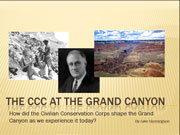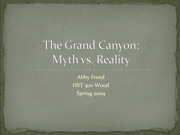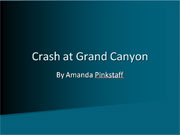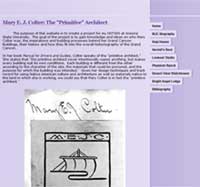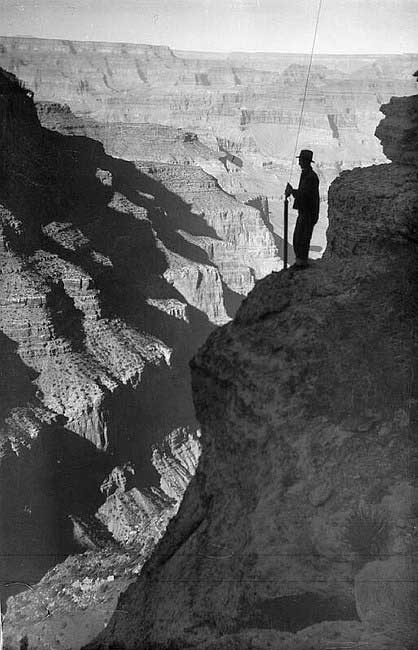Course Description
This course engages students in “doing history” by exploring American history through the lens of the Grand Canyon. Two goals drive this class: 1) further develop students’ historical habits of mind and practice; and 2) improve student knowledge and understanding of the Grand Canyon and its place in American culture and history. To accomplish these goals, students study the Canyon’s history and cultural significance and produce historical materials that describe, interpret, and evaluate the Canyon’s peoples, places, and events. In practicing the historical craft, students read historical accounts; dig for information through a variety of records; frame questions; analyze primary and secondary sources; pose hypotheses; use evidence to mount arguments; and present historical interpretations.
Student Slide Presentations & Web Sites
Student Sample Papers
The Civilian Conservation Corps’ Legacy at Grand Canyon National Park
Peter B. Hernandez graduated college in June of 1929 and stepped into the world filled with hope and the youthful exuberance that accompanies most college graduates. He was confident that industry would provide for him as it had for those that had come before and that despite the economy’s failings he would find a job. However, he and his fellow graduates faced increasing challenges as the economy shrank further and further into disrepair and jobs became scarce. Hernandez secured employment as a butcher, which he described as torturous, and he gradually sank into a state of hopelessness and insecurity as he struggled through the first years of the 1930s. His confidence in the future disappeared and he felt that he was wasting his youth on a “procession of failures [and] disappointments” in the face of ever growing economic misery. This all changed when Hernandez heard that President Franklin Delano Roosevelt planned to put young men to work for a new relief agency and he jumped at the opportunity. Hernandez left for the Grand Canyon to join Company 819 of the Civilian Conservation Corps in the spring of 1933; filled with hope, head held high, and ready to make his mark.
This excerpt is taken from a paper written by student Peter Trentacoste. To read full essay click here.
The Effects of Glen Canyon Dam on the Grand Canyon
Just south of the blue waters of Lake Powell stands a human-made structure of both splendor and controversy, the 710-foot tall Glen Canyon Dam. The construction of Glen Canyon Dam on the Colorado River altered the surrounding environment, and various interests have viewed the cost and benefits of the dam differently.
Proponents of Glen Canyon Dam believed that the construction represented a progressive development generating jobs, electrical power, revenue, and recreational opportunities. Dam opponents, in contrast, argued that the costs of environmental degradation caused by the dam outweighed the benefits provided. Although the dam has held back the waters of the Colorado for half a century, controversy over the decision to build it continues.
This excerpt is taken from a paper by student Brandt Lange.

